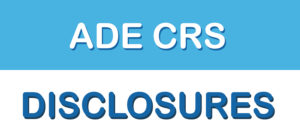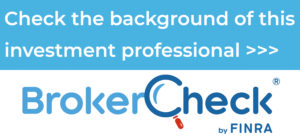Understanding Individual 401(k) Plans
An individual 401(k) plan is worth considering if you’re looking to set up your first retirement plan or want to switch to a different plan.
If you’re self-employed or own a small business, you’ve probably considered establishing a retirement plan. If you’ve done your homework, you likely know about simplified employee pensions (SEPs) and savings incentive match plans for employees (SIMPLE) IRA plans. These plans typically appeal to small business owners because they’re relatively straightforward and inexpensive to administer. What you may not know is that in many cases an individual 401(k) plan [which is also known by other names such as a solo 401(k) plan, an employer-only 401(k) plan, a single participant 401(k) plan, or a mini 401(k) plan] may offer a better combination of benefits. An individual 401(k) plan is worth considering if you’re looking to set up your first retirement plan or want to switch to a different plan.
What is an individual 401(k) plan?
An individual 401(k) plan is a regular 401(k) plan combined with a profit-sharing plan. However, unlike a regular 401(k) plan, an individual 401(k) plan can be implemented only by self-employed individuals or small business owners who have no other full-time employees (an exception applies if your full-time employee is your spouse). If you have full-time employees age 21 or older (other than your spouse) or part-time employees who work either 1,000 hours a year for one year or 500 hours a year for three consecutive years, you will typically have to include them in any plan you set up, so adopting an individual 401(k) plan will not be a option. (Beginning in 2025, the service requirement for part-time employees drops to two consecutive years.)
Note: An individual 401(k) plan isn’t really a different kind of 401(k) plan. Rather, it simply takes advantage of the fact that relaxed rules apply when the only individuals who participate in the plan are the owner and the owner’s spouse.
What makes an individual 401(k) plan attractive?
One feature that makes an individual 401(k) plan an attractive retirement savings vehicle is that in most cases your allowable contribution to an individual 401(k) plan will be as large or larger than you could make under another type of retirement plan.
With an individual 401(k) plan you can elect to defer up to $23,000 of your compensation to the plan for 2024 (up from $22,500 in 2023), just as you could with any 401(k) plan. If you reach age 50 or older by the end of 2024, you can make an additional catch-up contribution of up to $7,500 (unchanged from 2023). In addition, as with a traditional profit-sharing plan, your business can make a maximum tax-deductible contribution to the plan of up to 25% of your compensation (up to $345,000 in 2024; $330,000 in 2023). The percentage is slightly less than that if you are a sole proprietor or unincorporated.
Because the amount of compensation deferred as part of a 401(k) plan does not count toward the 25% limit, you, as an owner-employee, can defer the maximum amount of compensation under the 401(k) plan, and still contribute up to 25% of total compensation to the profit-sharing plan on your own behalf. However, total plan contributions for 2024 cannot exceed the lesser of $69,000 or 100% of your compensation ($66,000 for 2023), plus any catch-up contributions if you’re 50 or older.
For example, Dan is 35 years old and is the sole owner of an incorporated business. His compensation in 2024 is $100,000. Dan sets up an individual 401(k) plan for his retirement. Under current tax law, Dan’s plan account can accept a tax-deductible business contribution of $25,000 (25% of $100,000), plus a 401(k) elective deferral contribution of $23,000. As a result, total plan contributions on Dan’s behalf equal $48,000, which falls within Dan’s contribution limit of $69,000 (the lesser of $69,000 or 100% of his compensation).
These contribution possibilities aren’t unique to individual 401(k) plans; any business establishing a regular 401(k) plan and a profit-sharing plan could make similar contributions. But individual 401(k) plans are simpler to administer than other types of retirement plans. Since they cover only a self-employed individual or business owner and a spouse, individual 401(k) plans are not subject to the often burdensome and complicated administrative rules and discrimination testing that are generally required for regular 401(k) and profit-sharing plans.
Note: You can design your individual 401(k) plan to let you designate all or part of your elective deferrals as Roth 401(k) contributions. Roth 401(k) contributions are made on an after-tax basis, just like Roth IRA contributions. Unlike pre-tax contributions to a 401(k) plan, there’s no up-front tax benefit — contributions are transferred to the plan after taxes are calculated. Because taxes have already been paid on these amounts, a distribution of your Roth 401(k) contributions is always free from federal income tax. And all earnings on your Roth 401(k) contributions are free from federal income tax if your distribution is “qualified.” A qualified distribution is one made after the account has been held for at least five years and the account owner reaches age 59½, dies, or becomes disabled.
Other advantages of an individual 401(k) plan
Large potential annual contributions and straightforward administrative requirements are appealing, but individual 401(k) plans have other advantages, which are shared by many other types of retirement plans:
- An individual 401(k) is a tax-deferred retirement plan, so you pay no income tax on plan contributions or earnings (if any) until you withdraw money from the plan [qualified distributions from Roth 401(k) accounts are entirely free from federal income taxes]. And, your business’s contribution to the plan is tax deductible.
- Contributions to an individual 401(k) plan are completely discretionary. You should always try to contribute as much as possible, but you always have the option of reducing or even suspending plan contributions if necessary.
- An individual 401(k) plan can allow loans and may allow hardship withdrawals if necessary.
- An individual 401(k) plan can accept rollovers of funds from another retirement savings vehicle, such as an IRA, a SEP, or a previous employer’s 401(k) plan.
Disadvantages of an individual 401(k) plan
Despite its attractive features, an individual 401(k) plan is not the right option for everyone. Here are a few potential drawbacks:
- An individual 401(k) plan, like a regular 401(k) plan, must follow certain requirements under the Internal Revenue Code (IRC). Although these requirements are much simpler than they would be for a regular 401(k) plan with multiple participants, there is still a cost associated with establishing and administering an individual 401(k) plan.
- Institutions offering individual 401(k) plans often provide limited investment choices. However, investment options are likely to increase in the future as demand for the individual 401(k) increases among small business owners.
- Self-employed individuals and small business owners with significant compensation can already contribute a maximum of $69,000 in 2024 by using a traditional profit-sharing plan or SEP plan. An individual 401(k) plan will not allow contributions to be made above this limit (an exception exists for catch-up contributions that can be made by individuals age 50 or older).
- An individual 401(k) may not meet your future needs. If your business grows and you hire a full-time employee who is not your spouse, that employee will generally need to be included in your plan. If that happens, you no longer have an individual 401(k) plan; you have a regular 401(k) plan and profit-sharing plan, and you lose the benefit of the individual 401(k) plan’s simplified administration rules.
- In general, individual 401(k) plans are not subject to the Employee Retirement Income Security Act of 1974 (ERISA). While this means there are less administrative requirements, it also means that these plans may have less creditor protection than 401(k) plans that are covered by ERISA. If creditor protection is important to you, consult a qualified professional.
Thanks for checking out the blog.
Joe Breslin, CFP®
This material is for general information only and is not intended to provide specific advice or recommendations for any individual. There is no assurance that the views or strategies discussed are suitable for all investors or will yield positive outcomes. CDs are FDIC Insured to specific limits and offer a fixed rate of return if held to maturity, whereas investing in securities is subject to market risk including loss of principal. This material was prepared by LPL Financial.
The opinions voiced in this material are for general information only and are not intended to provide specific advice or recommendations for any individual. To determine which investment(s) may be appropriate for you, consult your financial advisor prior to investing. All performance referenced is historical and is no guarantee of future results. All indices are unmanaged and cannot be invested into directly.
The information provided is not intended to be a substitute for specific individualized tax planning or legal advice. We suggest that you consult with a qualified tax or legal advisor.
LPL Financial Representatives offer access to Trust Services through The Private Trust Company N.A., an affiliate of LPL Financial.
Joe Breslin is a Registered Representative with and Securities are offered through LPL Financial, member FINRA/SIPC Investment advice offered through ADE, LLC, a registered investment advisor. Armstrong Dixon and ADE, LLC are separate entities from LPL Financial.
This communication is strictly intended for individuals residing in the state(s) of CO, DE, DC, FL, MD, MO, NY, NC, OR, PA, VA and WV. No offers may be made or accepted from any resident outside the specific states referenced.
Securities and insurance offered through LPL or its affiliates are: 









